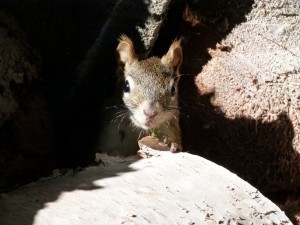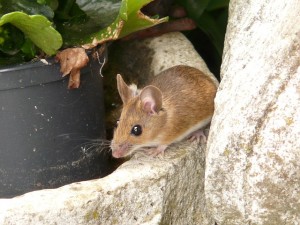 There is nothing more frustrating than trying to remove an animal once it has decided to take up residence in your home! Whether they burrow under the foundation, or invade the attic, it can be both a time consuming and expensive process to evict them. Remember the old saying “An ounce of prevention is worth a pound of cure”? Well, that is very fitting! The following are some tips on preventing animals for making your home their home.
There is nothing more frustrating than trying to remove an animal once it has decided to take up residence in your home! Whether they burrow under the foundation, or invade the attic, it can be both a time consuming and expensive process to evict them. Remember the old saying “An ounce of prevention is worth a pound of cure”? Well, that is very fitting! The following are some tips on preventing animals for making your home their home.
Window Wells
Window wells are an easy spot for an opportunistic animal to sneak into your home. To animal-proof your window wells, consider putting a plastic or metal grate over them.
 Basement And Foundation
Basement And Foundation
Do a check of your perimeter specifically looking for any holes near the foundation. An animal only needs a small space to gain entry. If you are concerned that an animal has already taken up residence, ball up some newspaper and place it in and around the hole (unless you suspect birds or bats because this can trap them). If you have animals, the paper will be disturbed. Once you determine no animals have already moved in, move forward with sealing any holes you may have found. These holes can be plugged with materials such as wood, aluminum, sheet metal, mesh hardware cloth, or any other durable item. Small and hard to reach holes can be sealed with wadded up wire or even copper or stainless steel scouring pads.
Decks And Porches
Animals like raccoons and skunks have been known to burrow and build dens under decks and porches. An outdoor motion-activated flood light can help spook away animals who are interested in moving in. If you have a deck or porch that is built within 2 feet of the ground, the University of Illinois suggests that you dig a trench at least 10 inches deep around the perimeter. Once you have your trench, attach 1″ × 1″ welded wire or 1/2″ × 1/2″ mesh hardware cloth “from the top of the outside joists to the bottom of the trench.” You should allow for 6 to 8 inches of wire at the bottom and “bend it out at a 90o angle.” Then, fill the trench with rocks or soil and cover it with something like a lattice to make it look it nice.
Roof
Keep an eye out for loose shingles. Also look for any areas that may have water damage since that softens the material and it is easier for animals to dig a hole through it. You should check your roof twice a year and if you see any damage fix it immediately (after ensuring no animals have moved in).
Attic Vents And Soffits
You can prevent animals from coming in through attic vents and soffits by covering the inside opening with 1/2″ × 1/2″ mesh hardware cloth.
Attic Fan Opening
Follow the same steps used for attic vents and soffits. You can make it even more secure by nailing 1″ × 2″ pieces of wood on the edges of the mesh hardware cloth to keep it in place.
Fireplace Or Furnace Chimney
Install a commercial chimney cap or cover with mesh hardware cloth. In order to keep sticks from accumulating, be sure to leave a peak over the flue.
Do not try to remove raccoons on your own. Without realizing it, you could endanger yourself or the animal, or even be in violation of a law or ordinance. Call a trained professional like Attic Solutions who are familiar with humane and effective wildlife removal procedures.
 Usually when we think about groundhogs, we are reminded of Punxsutawney Phil, the groundhog who lets us know how soon spring will come, or the awesome Billy Murray movie “Groundhog Day.” Well, groundhogs (also known as woodchucks) are not just for movies and forecasting weather. They live among us, and might even be responsible for damaging your yard. To find out if you have your very own Punxsutawney Phil living in your backyard look for the following signs.
Usually when we think about groundhogs, we are reminded of Punxsutawney Phil, the groundhog who lets us know how soon spring will come, or the awesome Billy Murray movie “Groundhog Day.” Well, groundhogs (also known as woodchucks) are not just for movies and forecasting weather. They live among us, and might even be responsible for damaging your yard. To find out if you have your very own Punxsutawney Phil living in your backyard look for the following signs.













 There is nothing more frustrating than trying to remove an animal once it has decided to take up residence in your home! Whether they burrow under the foundation, or invade the attic, it can be both a time consuming and expensive process to evict them. Remember the old saying “An ounce of prevention is worth a pound of cure”? Well, that is very fitting! The following are some tips on preventing animals for making your home their home.
There is nothing more frustrating than trying to remove an animal once it has decided to take up residence in your home! Whether they burrow under the foundation, or invade the attic, it can be both a time consuming and expensive process to evict them. Remember the old saying “An ounce of prevention is worth a pound of cure”? Well, that is very fitting! The following are some tips on preventing animals for making your home their home.
 Discovering you have an uninvited animal living in your home can be both frightening and stressful. Wild animals can cause damages that are costly to fix and may even pose a health hazard. Not only can removing wild animals from your home be dangerous, there may also be laws and ordinances you aren’t even aware of governing the procedure. If you find yourself needing to hire a professional animal removal company, there are several factors you should take in to consideration.
Discovering you have an uninvited animal living in your home can be both frightening and stressful. Wild animals can cause damages that are costly to fix and may even pose a health hazard. Not only can removing wild animals from your home be dangerous, there may also be laws and ordinances you aren’t even aware of governing the procedure. If you find yourself needing to hire a professional animal removal company, there are several factors you should take in to consideration.